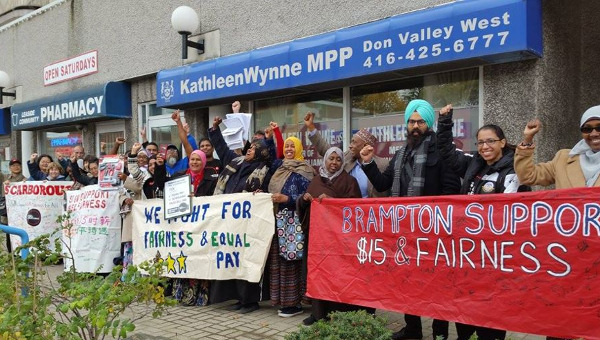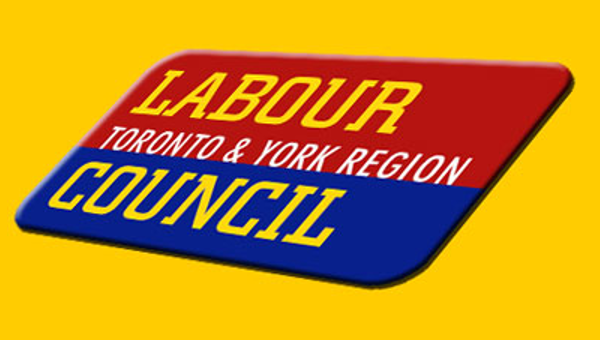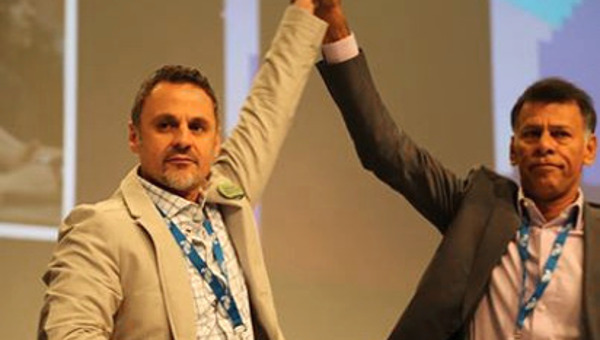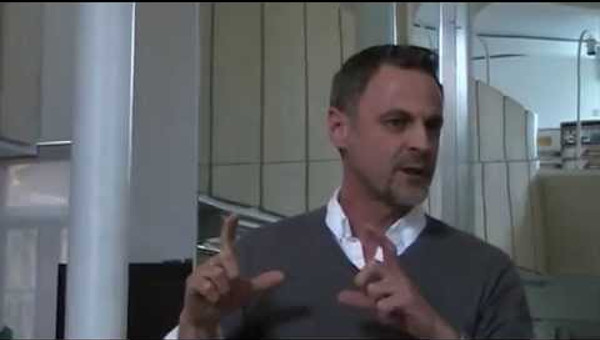Austerity, the Conservative Majority and the CLC Action Plan
The recent Conservative majority in Parliament presents organized labour with the challenge of finding new ways to build and mobilize working people against the neoliberal austerity agenda.
The neoliberal offensive in Canada has intensified since the election of the Conservative Party under Stephen Harper in 2006. During their tenure in government, the Tories have defunded numerous progressive organizations and programs, and have failed to adequately reform Canada’s employment insurance program in such a way that would have provided much needed support to workers at the height of the economic crisis.
However, the federal government did chose to effectively bailout Canada’s financial industry through the Insured Mortgage Purchase Program (IMPP) and the Extraordinary Financing Framework (EFF), where Canadian banks were given the option of auctioning their risky mortgage packages to the Canadian Mortgage and Housing Corporation (CMHC) in exchange for public money.
Rather than allocating this bailout money toward public spending and the creation of new jobs for unemployed workers, it has been used to restore the balance sheets of the financial sector and fund the future expansion of Canadian finance capital.[1]
Since its time in office, the Harper government has also increased military spending, escalated the war in Afghanistan, spent $858-million on the G20 summit last June, and is projected to cut corporate taxes, expand prisons and spend nearly $29.3-billion to purchase 65 Lockheed Martin F-35 Joint Strike Fighters.
By prioritizing the needs of capital accumulation and militarism over public services and social programs, the Conservative government has shown itself to be a stark enemy of working people in Canada.
The 2011 Convention of
the Canadian Labour Congress
Given the reality of a strengthened Harper government, leftist activists and critics have pointed to the need for widespread organized resistance by labour unions with the strength and numbers capable of articulating working-class solidarity on a massive scale.
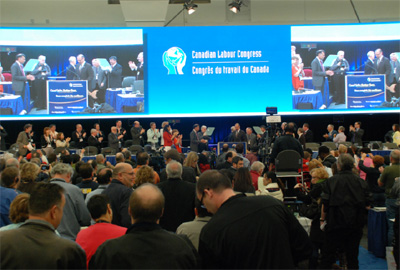
In this context, the recent 26th Constitutional Convention of the Canadian Labour Congress (CLC), which was held from May 9 to May 13 in Vancouver, could not have been timelier. The CLC holds a convention every three years that involves local unions who send delegates with proposed resolutions that are presented to the floor. Nearly 2,600 delegates attended what ended up being the largest convention in the history of the CLC.
At every convention, resolutions are debated, voted on, and subsequently adopted, and during the week-long conference, officers – including the President, two Executive Vice-Presidents and a Secretary-Treasurer – are elected by secret ballot. At the end of the week, an Action Plan is developed “based on the resolutions, committee reports and policies discussed amongst the members of the Labour movement.”
According to the Congress, “the Action Plan is the basis of our work for the next three years. It provides a general guide to the activities of the Congress itself, the provincial and territorial federations of labour, local labour councils and affiliated unions.”[2]
As a union and media representative at the Convention, I was left with a number of observations about the week’s proceedings. First, much of the week was filled with guest speakers, panel discussions and cultural entertainment, rather than resolutions and the drafting of an Action Plan, both of which should be the backbone of labour debates and the necessary discussions between union activists.
More importantly, however, much of the convention was dominated by NDP boosterism and speeches by labour leaders acting as de facto spokespersons for the party. For the many NDP enthusiasts in attendance, the message was clear: although it is unfortunate there is a Conservative majority, it is hopeful that the NDP makes up the Official Opposition. In four years, they argue, the left can gain even more ground, ultimately defeat the Tories, and form a majority government. Elsewhere, Erin Weir, an economist with the United Steelworkers, put this ‘don’t rock the boat’ theme as follows: “the next four years will be tough. But there is a bright orange light at the end of the tunnel.”[3]
The pro-NDP discourse was challenged by a much more stifled message coming mainly from activists prominent in the CLC’s Action Caucus, a diminished force in comparison to the CLC itself, which for the time being, has no life apart from conventions. As Sam Hammond recently reported, in the words of one Action Caucus member, “it was as if there were two conventions going on at the same time that did not connect.”[4]
For proponents of this message, the massive gains made by a social democratic party with many determined former union leaders and activists is a welcome development, but a successful labour movement cannot deal with the crisis facing labour unions and working people in general by making soft demands, or misdirecting all of its energy and resources into campaigns to elect an NDP majority in 2015.
In the context of the worldwide strength of neoliberalism coming out of the financial crisis,[5] the NDP surge (if based on an abrupt shift in support in Quebec and the Liberal Party collapse) may reflect an emerging trend in favour of moderate political resistance to the Harper majority.
A large contingent of the CLC Action Caucus acknowledged this possibility, but argued that we will only be successful if we build a bottom-up, mass labour movement with the potential to shift political power away from the interests of the rich and corporations, toward an agenda that favours unions and working people in Canada. This message was most visible in literature disseminated at the convention by members of the Communist Party of Canada, in particular, a leaflet entitled “Unity in Defense, Unity in Fightback” that read:
“Only labour can defend the people from the impending assault on privatization, militarization, sell-out of resources, and integration with U.S. imperialism.
“The new political reality demands that resistance and struggle against this reactionary agenda must shift decisively to the extra-parliamentary arena. This is where the next battles will be fought and where victories can and must be won.”
But whether the protagonist is the NDP or a supposed grassroots ‘labour movement,’ each perspective falls back on a reified agent of change, which neglects to fully account for the problem of building solidarity, and the organizational inertia and strategic impasse of these forces.
Rather than counterpose a mass labour movement to the ‘official’ social democratic party, I suggest that it is more important, in this conjuncture, that socialists and labour activists address concrete, strategic problems that we will confront on the ground. This question of building solidarity through concrete struggle draws our attention to the need to draw the boundaries of different communities of struggle as widely as possible.
Socialism, Economic Nationalism and
the CLC-NDP Connection
On the third day of the convention, Jack Layton, leader of the NDP and now also the Official Opposition, gave a speech to a standing ovation with delegates cheering wildly. The widespread enthusiasm for the NDP among leaders and members involved in the CLC is largely a reflection of the Congress’ lengthy history of pragmatic unionism, labour-management cooperation, and overt support for the parliamentary party system.
The CLC was founded in 1956 following a merger of two major labour congresses, the Trades and Labour Congress of Canada (TLC) and the Canadian Congress of Labour (CCL). While the CCL leadership tended to favour the Cooperative Commonwealth Federation (CCF) party, much of the TLC leadership supported the Liberal Party, although efforts were made by CCF activists to attain TLC support prior to the merger, culminating in a 133-133 tie vote at the TLC’s 1954 Ontario convention on the question of CCF support.
The CCL-TLC merger helped minimize partisan differences for the sake of forging harmony between rival labour organizations. At the same time, however, this period was dominated by Cold War ideology and McCarthyism, which often led to “state sponsored attacks and witch hunts” against left wing and communist trade unionists.[6]
By 1958, the Canadian Labour Congress and the CCF set up a 20 person joint committee to discuss the foundation of a new political party, resulting in the formation of the New Democratic Party (NDP) in 1962.
Not only was the CLC integral to the formation of the NDP, but many union locals actually affiliated with the NDP, which gave them the right to participate in the party’s conventions and councils. In addition, the constitution of the NDP recognized the CLC’s District Labour Councils as delegating bodies to the provincial and federal conventions of the party.[7]
Apart from this direct relationship, in the 1960s the CLC and the NDP shared a willingness to resist “the Waffle‘s attempt to link Canadian economic, political and cultural sovereignty with socialism.”[8] But in response to such events as the 1968 prices and incomes negotiations, the 1975 imposition of wage controls, and the effects of the 1981-82 recession, the CLC gradually transitioned to its own model of economic nationalism.
The Congress acted as a traditional interest group prior to the mid-1970s, with an emphasis on lobbying government to protect the interests of labour. As Miriam Smith notes, “the relative underdevelopment of the Canadian welfare state and the government’s shaky commitment to Keynesianism created the political space for the CLC’s advocacy of Keynesianism and the expansion of the welfare state.” At the same time, “the CLC opposed the spectre of economic nationalism raised by the Waffle, setting the scene for conflict between unions and the Waffle within the NDP.”[9]
By the 1980s, however, the CLC’s increasing emphasis on alliance-building strategies underpinned its nationalist opposition to continentalism and free trade. This was joined by its turn to post-Keynesianism in the late 1970s and its advocacy for enhanced Canadian control of the economy.[10] The CLC’s advocacy for economic nationalism, while simultaneously opposing socialism, remains apparent through calls for public investment programs such as “Made in Canada” procurement policies to allow for goods and services inputs are purchased in Canada.[11]
For instance, there were a number of resolutions presented at this year’s convention that called for increased Canadian control of the economy at the expense of foreign ownership.
The CLC’s nostalgia for rebuilding the welfare state (the so-called ‘Golden Age of Capitalism’), reformism and Keynesianism was also on prominent display during the convention, particularly with regards to one of several panel presentations that took place during the week, “What Derailed the Post-War Social Contract.”[12] During this discussion, four panelists discussed the decline of the “social contract” in Canada in the post-war period. While the panelists were largely critical of the gendered and race-based inequality of this period, the overall tendency was to praise the era’s employment policies and more equitable distribution of wealth.
Following the presentations, when a delegate from the floor inquired about the possibility of socialism, rather than the “social contract,” as a more suitable course of action for the labour movement, the speakers largely avoided the question. There was no recognition that “the post-war welfare state was a strategic bargain between organized labour, the state and the capitalist class in the West to weaken the appeal of socialism or radicalism in the working-class.”[13]
The proceedings included numerous other guest speakers such as Gregor Robertson, the current mayor of Vancouver, who praised the 2010 Winter Olympics in Vancouver despite the numerous contradictions the Games presented for private and public sector unions,[14] and Charles Ferguson, the director and producer of the documentary “Inside Job,” who denounced the excessive greed of bankers and financiers that resulted in the current global economic crisis. The latter is a worthy indictment, but like the proceedings more generally, Ferguson only called for more government intervention and regulation in order to maintain the stability of the economic system.
Such a perspective divorces the financial sphere and speculative banking from the broader capitalist mode of production, and therefore fails to adequately take into account the possibility of socialism as an alternative to the inherent inequalities engendered by capitalism, a set of economic and social relations predicated on generating profit and exploiting labour.
The Action Caucus
The Action Caucus, which is now mainly a series of meetings consisting of advocates for a CLC action plan, discussed many problems with the convention over the course of the week.
Among other things, these included the lack of debate surrounding the adoption of an action plan, the undemocratic nature of the proceedings,[15] and the need to move beyond the CLC’s narrow support for the NDP, a party that has recently supported policies of military intervention by imperialist powers, and whose 2011 party platform failed to even mention organized labour and was centered on support for small business as the economic drivers of the economy.
Of particular concern was the extent to which an excessive focus on electing an NDP majority in 2015 might obscure the importance of concrete labour struggles, in particular, the current strike by 50,000 workers affiliated with the Canadian Union of Postal Workers (CUPW) against their employer, Canada Post. Some discussions even revolved more generally around the necessity of engaging in a broader fightback against capitalism itself.
In the context of rumours that an Action Plan was being drawn up that only addressed support for the NDP, the Action Caucus drafted their own motion, lobbied labour officials and leaders, and circulated a petition (with the motion included) that was endorsed by over 500 delegates. Through democratic input and dialogue, the Caucus drafted a motion that read as follows:
“Because the Canadian labour movement will face unprecedented challenges as a result of the economic crisis combined with a conservative majority government;
“And because only a grassroots movement organized locally and coordinated across Canada can defeat the conservative agenda;
“The CLC will work through the labour councils, federations and with community partners and coalitions to build momentum toward sustained and growing resistance to Stephen Harper and the conservative government’s agenda through mobilization, education, public demonstrations, direct action and strike action where necessary.”
Not only did the motion emphasize “the Canadian labour movement” and a coordinated “grassroots movement,” it identified the necessity of coalition and alliance-building by working with community partners. While the motion avoided any direct reference to overcoming capitalism or seeking out socialism as an alternative, it did address the need to build solidarity, by creating new structures for bringing unions and community groups together.
In the end, while the Action Plan did not make it to the floor and was not debated, both the support of many delegates for the NDP, as well as much of the spirit of the Action Caucus’ motion, were incorporated by the CLC executive into a commendable action resolution entitled “Good Jobs, Better Lives: A Workers Program to Defeat the Right-Wing Agenda.”[16]
While the program specifies that the CLC will work to elect a federal NDP government, and “develop a parliamentary strategy on lobbying and parliamentary committee work,” it also pledges to foster support among the broader public, engage social allies in community-based opposition, and “build momentum by mobilizing our membership and our allies in the community through education, public demonstrations and direct action where necessary to defeat the right-wing agenda.”
The acknowledgement that it is imperative that unions build solidarity through alliance-building is certainly a promising development. Hopefully, the CLC’s Workers Program will provide the Congress, the Labour Councils and its affiliates with the necessary ammunition to develop a sustained resistance to neoliberal austerity.
At a structural level, however, the CLC’s continued attempt to strengthen Canadian capital, alongside demands for the nationalization or even socialization of capital, is often ambiguous. This ambiguity is largely reflective of the Congress’ asymmetrical approach to traditional lobbying over mobilization strategies against employers and the state using popular or community-based coalitions.
Beyond Lobbying
For the purposes of assessing future ways forward for organized labour, a number of different conclusions can be drawn from this observation.
First, the Workers Program does indicate that the CLC will “take whatever actions are necessary to defend our affiliates,” but a notable omission from the program was any mention of the word ‘strike’ or ‘general strike.’ This omission can be seen as an expression of many union leaders’ refusal to use the strike weapon at decisive moments. This unwillingness was one of the major lessons of the failure of organized labour in Wisconsin to defeat Governor Walker’s draconian plan to eliminate meaningful collective bargaining for public sector workers.
This caution expressed by Wisconsin union leaders flows from the often “conservative nature of the trade union bureaucracy: The union officialdom functions as a mediating layer between workers and employers. In the United States, the union bureaucracy is particularly conservative, preferring to cling to the illusion of a labour-management ‘partnership’ it established in the boom years of the 1950s and 1960s.”[17]
For the time being, as evidenced by the current CUPW strike, it is still legal for public sector workers to strike in Canada (unlike public sector unions in Wisconsin). To avoid similar illusions, however, Canadian union leaders, especially those in the CLC executive, must overcome their reluctance to consider strike action in moving forward, as part of developing a range of new tactics and strategies to reverse collective bargaining setbacks and the inability to sustain organizing gains.
Second, even in the midst of the largest financial crisis in history, there was an overall lack of discussion at the convention of an anti-capitalist politics and programme. The Workers Program, like the convention itself, failed to raise alternatives to capitalism. The general approach is increasingly embedded in business forms of unionism.
On the contrary, unions must be willing to “fundamentally assess and transform their own institutions and practices in the struggle for a post-neoliberal – even post-capitalist – order. This is partly about looking at the organizational divisions of unions as they now exist. It is especially about a process that sees unions as empowering workers and contributing to building a different society – social justice unionism.”[18]
A shift toward a social movement unionism would require concerted efforts to connect the defense of unionized jobs with the fight for the dignity and rights of workers in non-unionized jobs, as well as link struggles across the many divisions within organized labour with other social justice struggles. The discourse to advance these struggles is often present, but not the necessary organizational restructuring of the Canadian labour movement, resources and political commitment.
Such a commitment would have to recognize that, in the words of David McNally, unions and the Left need to pursue a politics that actually highlights the contradictions of capitalist social relations, one that “addresses the disasters of the neoliberal model and publicizes the inherent conflict between capital accumulation and the satisfaction of human needs. And this requires a Left that speaks openly of socialism as the alternative.”[19]
This sentiment is reflected in the 2008 “Socialist Project Labour Movement Platform,” which points to the importance of creating “genuine relationships of solidarity between the union movement and other struggles for justice,” as well as building “the collective capacities necessary to realize an alternative to capitalism’s imprisoning logic – the organizational capacities to analyze, understand, create democratic forums for collective participation and resistance, communicate and strategize.”[20]
Third, the Action Caucus was undoubtedly correct to canvas the CLC membership for greater inclusion of a point of view that recognizes that collective struggle by workers and allies, rather than simply voting, is the most effective means of developing more widespread political participation by larger numbers of workers.
While this “does not mean we can or should ignore what is happening in the parliamentary realm, particularly when a party like the NDP gains considerable support,”[21] the norms of electoral politics often commit unions to supposedly ‘safe’ political solutions rather than risky workplace conflicts or more broad-based workers collective action. Certainly, the aims and aspirations of organized labour cannot be this narrow.
Nonetheless, in the struggles ahead, organized labour and the Left must be careful not to fall back on a generalized agent of change, such as an abstract ‘grassroots labour movement,’ without taking seriously the problem of building solidarity, or addressing the concrete need in Canada to re-build viable socialist organizations. These are strategic problems that we will confront on the ground.
Finally, a key aim of the Left should be to, as broadly as possible, actively construct and positively maintain counter-hegemony against the exploitative nature of capitalism. In order to have concrete influence over conservative values and other accepted and dominant practices, progressive social forces need to literally change the very ‘common-sense’ of politics, and engage in constant struggle to change minds and challenge government policies. No shift in electoral fortunes of the existing political parties, or of public policies, will be enough to break the neoliberal stranglehold.
This strategy must involve not only going beyond labour activity that aims only to protect the sectoral interests of single unions or sectors, but also moving union struggles beyond the organized working-class, and seeking out new avenues for solidarity with groups outside of the official trade union movement. •
Endnotes:
1.
Steve da Silva, “Bank Bailouts and the 2009 Federal Budget,” Financial Meltdown: Canada, the Economic Crisis and Political Struggle (Socialist Interventions Pamphlet Series, 2009), p. 41.
2.
“Conventions,” Canadian Labour Congress, accessed June 4, 2011.
3.
Erin Weir, “Historic NDP Breakthrough is Good,” The Progressive Economics Forum, 3 May 2011.
4.
Sam Hammond, “The CLC: A Tale of Two Conventions,” People’s Voice, 1-15 June, 2011.
5.
For an analysis of labour’s current impasse and the balance of class power coming out of the recent economic crisis see Greg Albo, Sam Gindin and Leo Panitch, In and Out of Crisis: The Global Financial Meltdown and Left Alternatives (Oakland, CA: PM Press, 2010). While the authors recognize the centrality of trade unions to advancing a progressive political agenda, they also suggest that “key struggles and signs of political resistance keep surfacing from both inside the labor movement and also broader social movements, revealing a vast potential for exploring new tactics for working-class community as well as union mobilization” (95-96).
6.
Hammond, “CLC Structural Reform and the Ghosts of Democracy Past,” People’s Voice, 1-15 April 2011.
7.
It is not clear if this remains the case today, as the NDP constitution has become “an internal document,” available to members only. See Leslie MacKinnon, “The NDP’s Missing Constitution,” CBC.ca, 27 April 2011.
8.
Miriam Smith, “The Canadian Labour Congress: From Continentalism to Economic Nationalism,” Studies in Political Economy, 38 (Summer 1992), p. 35.
9.
Smith, “Canadian Labour Congress,” p. 37.
10.
Smith, “Canadian Labour Congress,” p. 38.
11.
“CLC Analysis of the 2011 Federal Budget,” Canadian Labour Congress, 22 March 2011.
12.
“What Derailed the Post-War Social Contract?,” Canadian Labour Congress, 4 June 2011.
13.
Ajamu Nangwaya, “Austerity and Class Struggle,” BASICS 23 (November-December 2010).
14.
Mathew Nelson, “Labour Geography and the 2010 Vancouver Olympics,” Studies in Political Economy Vol. 86 (Autumn 2010), pp. 131-66.
15.
For example, a number of participants expressed concern over the tendency of the convention chairs to favour delegates speaking in favour of certain resolutions. In the first several days of the convention, Georgetti “…twice cut off Dave Pritchett from the Longshore Union, while allowing CAW leader Ken Lewenza to go four minutes beyond the speaking time.” This tendency resulted in a complaint by the Women’s Caucus and a subsequent apology on the third day from Ken Georgetti, the CLC’s President. See Hammond, “A Tale of Two Conventions.”
16.
To view the contents of the program, see: “A Workers Program to Defeat the Right-Wing Agenda,” People’s Voice, 1-15 June 2011.
17.
Lee Sustar, “The Lessons of Wisconsin’s Labour Revolt,” International Socialist Review, 77 (May-June 2011).
18.
Albo, Gindin and Panitch, In and Out of Crisis, p. 99.
19.
David McNally, “Global Finance, the Current Crisis and Challenges to the Dollar,” Financial Meltdown: Canada, the Economic Crisis and Political Struggle (Socialist Interventions Pamphlet Series, 2009), p. 18.
20.
“Socialist Project Labour Movement Platform,” Socialist Project, May 2008.
21.
Alan Sears and James Cairns, “After the Election 2011: Building our Movements on Shifting Ground,” The Bullet, No. 502, 12 May 2011.


